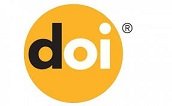A Field Guide to Whole Number Representations in Children’s Books
Abstract
Trade books are a common resource used to teach children mathematical ideas. Yet, detailed analyses of the mathematics content of such books to determine potential impacts on learning are needed. This study investigated how trade books represent whole numbers. A two-pronged approach was used a) one team documented every way 197 books represented numerical ideas and b) another team used standards to identify ideal representations. A third team validated the traits on 67 books. Greater variation than expected was documented (103 traits identified) and organized into a field guide for researchers to consult to design studies about how particular traits influence number learning. Studies could investigate how a particular trait supports learning or experimentally compare a selected combination of the 45 pictorial, 45 written symbol, 10 tactile, 2 kinesthetic, and 1 auditory trait. Implications for practice include recognizing what representations are present or missing from books used in classrooms. The study also serves as an example of how the field of mathematics education would benefit from adopting structures from disciplinary science, such as field guides, to inform how we organize phenomena of mathematics learning.
Keywords
Full Text:
PDFReferences
Nurnberger-Haag, J., Scheuermann, A., & McTeer, J. S. (2021). A field guide to whole number representations in children’s books. International Journal of Education in Mathematics, Science, and Technology (IJEMST), 9(4), 697-727. https://doi.org/10.46328/ijemst.1681
DOI: https://doi.org/10.46328/ijemst.1681
Refbacks
- There are currently no refbacks.
Copyright (c) 2021 International Journal of Education in Mathematics, Science and Technology








This work is licensed under a Creative Commons Attribution-NonCommercial-ShareAlike 4.0 International License.
ISSN: 2147-611X (Online)
